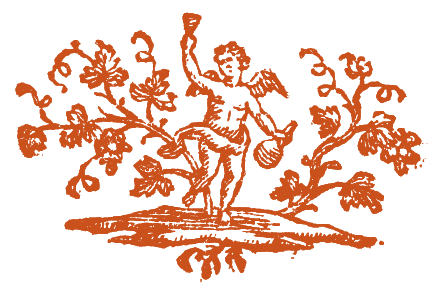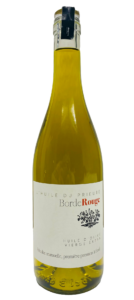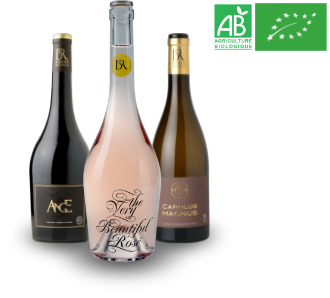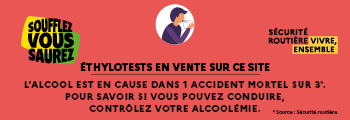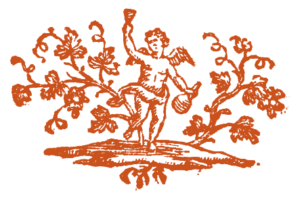The vineyard Château Borde-Rouge : history and know-how
Fruit of the earth ... and human labour
The vineyard of Château Borde-Rouge is one of the most picturesque geographies of the area. It is a natural amphitheater open to the sky, as the hand of God. At the heart of the circus, the castle, and on the steep hillsides of Mount Villebressan, the rows of vines that take possession of the red earth and form an illuminated green setting to the buildings of the castle and its timeless charm turret.
When arriving via the Corbières Wine Route, you’ll be captivated by the white rocky ridge, the ocher tones of the soil, and the deep green of (bi-)century-old pine trees sculpted by the wind. Within this enchanting panorama, you eventually come across the Château Borde-Rouge wine estate. The arrival is mesmerizing, gracefully accentuated by the twists and turns of the Orbieu River.
In the heart of the Aude department, on these resplendent medieval lands steeped in beauty, we invite you to embark on the most wonderful journey through time: between historical heritage and contemporary creation.
The wine estate is located on a unique terroir composed of black schists, limestone, and clays. The vineyards benefit from a Mediterranean climate with hot, dry summers and mild, humid winters. The vines face south, at an average altitude of 200 meters, which promotes optimal grape ripening.
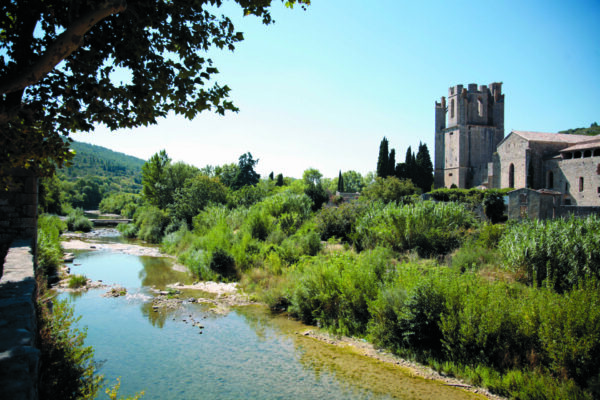
The Borde-Rouge Vineyard Over Time
The cultivation of vines in the limestone chaos of the Corbières massif dates back to two centuries before Christ, introduced by the Greeks. As you may have gathered, the history of the Borde-Rouge wine estate thus traces back to the origins of our civilization. Roman occupation, Saracen storms, and the labor of Benedictine monks have all left their mark on the fate of the Borde-Rouge estate in Lagrasse.
The Priory of the Abbey of Lagrasse is as ancient as the village abbey to which it belonged.
In the early Middle Ages, monks regained control of numerous vineyards and improved viticultural methods in the region. It was precisely in the 9th century that Benedictine monks worked to develop the estate. They maintained a large garden and harnessed the benefits of a sulfur spring on the property. They showcased all the richness of our magnificent terroir. Keepers of centuries-old winemaking expertise, the monks and the generations of vignerons who followed them have thus shaped this protected landscape where vines and scrubland harmoniously coexist.
The Corbières massif is a land of legends. The history of the Château Borde-Rouge estate is linked to the Legend of Philomène. This 13th-century manuscript recounts the foundation of the abbey but also its sanctification by Charlemagne. It evokes the bloody confrontation between the Saracens and the Franks, the red earth of the region forever bearing the traces of this conflict.
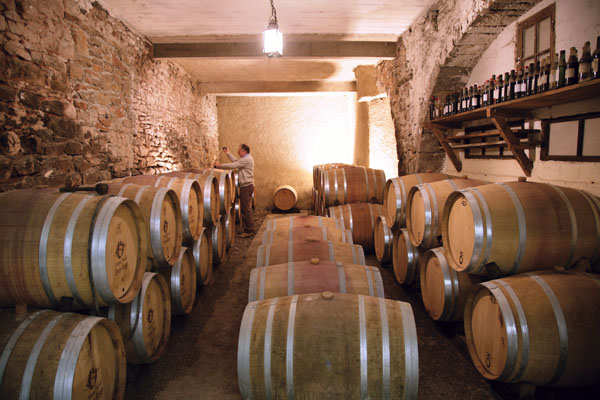
Our Grape Varieties and the AOC Corbières Designation
AOC Corbières wines must be produced within a specific geographical area that includes the eastern foothills of the Pyrenees, the hills surrounding the Corbières mountain range, and the plains between Narbonne and Carcassonne. The climate and terroir of the region, which comprises a mix of limestone, clay, and schist soils, contribute to the unique character of the wines.
In terms of area, the AOC Corbières appellation is the largest in Languedoc and the fourth-largest wine producer in France in terms of volume. It comprises approximately 1,400 producers.
AOC Corbières wines are known for their fruity and full-bodied flavors with notes of black fruits and spices
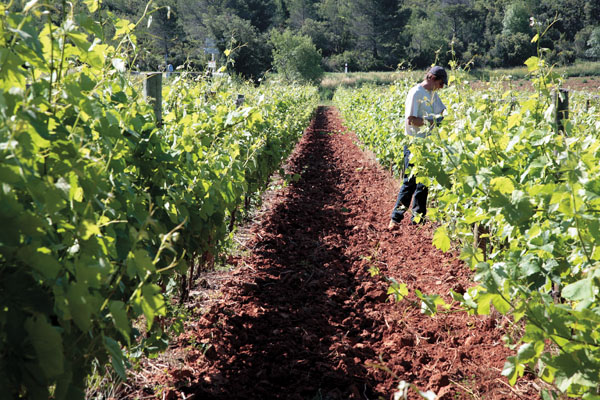
Organic Farming: A Balance Between Nature and Soil Work
In 2005, the Carrere family took over the vineyard, committing to organic farming. Embracing organic practices is a path we’ve embarked upon with strong conviction and a deep environmental sensitivity. Indeed, such a transition involves a significant adjustment period for both the producer and the vineyard ecosystem. This is why the transition process takes several years before a vineyard can label its bottles as ‘organic agriculture.’
While some winemakers do not convert all of their plots, Château Borde-Rouge has chosen to produce 100% organic wine without the use of pesticides, fungicides, or chemical fertilizers.
Obtaining the ‘Organic Agriculture’ label for Corbières wine production entails adhering to strict guidelines and undergoing regular inspections by a certifying body. The key rules for Corbières wine production in organic agriculture are as follows:
- The use of synthetic pesticides, chemical fertilizers, and genetically modified organisms is prohibited.
- Phytosanitary treatments must be limited to natural products allowed in organic agriculture.
- Cultivation practices (soil management) must adhere to organic agriculture principles, especially in terms of fertilization, water management, and biodiversity.
- Grapes must be vinified without the addition of chemical products and in accordance with organic agriculture rules.
These labels serve as evidence to our customers of a virtuous, modern, and high-quality production process. Practicing quality, sustainable viticulture that respects the environment is, in our view, the key to the sustainability of this ancient yet modern estate.
SCEA Domaine de Borde Rouge
Route de Saint-Pierre – 11220 LAGRASSE
+33 9 64 13 04 39

